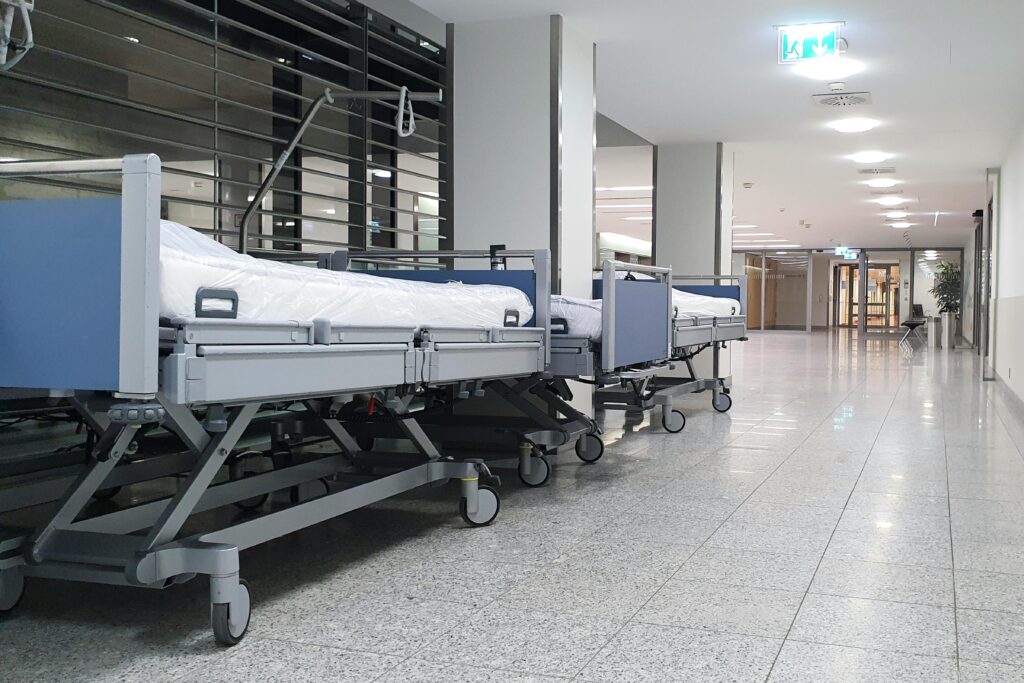Across the United States, rural hospitals are shutting down at an alarming rate. In many states, dozens of facilities are at risk of closing in the next 2-3 years. As a nurse, you are likely to see the ripple effects of these closures. Whether you work in a rural setting or provide care to patients who travel long distances just to see a healthcare provider. Understanding why these closures are happening and how they affect both patients and providers is essential.
In this Fast CE For Less guide, we will cover the key causes of rural hospital closures, how they impact local communities, and what you should know to better support patients and families during these changes.
Why Are Rural Hospitals Closing?
Rural hospitals have always worked with tight budgets. But lately, the financial pressure has become too much for many to handle. Government support is shrinking. Healthcare costs keep rising. Cash reserves are running low. These problems have pushed many rural hospitals to the brink, and some have already closed.
Decline in Federal and State Support
One big reason is the drop in government funding. Rural hospitals rely heavily on payments from Medicare and Medicaid to cover their costs. These programs make up a large portion of their income. When payments from Medicare or Medicaid are cut, delayed, or reduced, it puts a huge strain on the hospital’s budget. This can make it hard for them to pay staff, buy necessary equipment, or keep services running.
Medicaid cuts have been especially damaging. Many patients in rural areas depend on Medicaid to access healthcare. When Medicaid payments shrink, hospitals lose a major part of their revenue. This often forces them to cut back on staff, reduce services, or even close departments. It also makes it tougher for hospitals to invest in improvements or new technology that could help the community.
This cycle of funding cuts and rising costs creates serious financial challenges. It leaves rural hospitals struggling to meet the needs of their patients while staying financially stable. For nurses and healthcare workers, this means more pressure and uncertainty on the job.
Increasing Operational Costs
The cost of healthcare continues to rise, from medical supplies to equipment to staffing. Larger hospitals in urban areas may have the financial strength to absorb these costs. Rural hospitals often do not. With limited patient volumes and lower reimbursement rates, it’s difficult for rural facilities to keep up with growing expenses.
Low Patient Volume and High Uncompensated Care
Rural communities typically have smaller populations. This means fewer patients, and in many cases, more individuals who are uninsured or underinsured. As a result, rural hospitals provide a significant amount of uncompensated care, services that they never get paid for. Over time, this contributes to deep financial losses.
Limited Cash Reserves
Unlike large health systems, many rural hospitals operate with very limited cash on hand. They may have only enough in reserves to stay open for a few weeks or months. One unexpected expense or a delay in reimbursement can lead to layoffs, service cuts, or complete closure.

How Closures Affect Communities and Healthcare Workers
When a rural hospital shuts its doors, the effects ripple through the entire community. For many small towns, the local hospital, apart from offering medical care, is also one of the largest employers and a key contributor to the local economy.
Job Losses and Economic Decline
Hospitals employ a wide range of workers, including nurses, technicians, administrative staff, janitorial crews, and food service workers. When a hospital closes, these jobs disappear, leaving residents without work and the town without vital income. Local businesses, like pharmacies, gas stations, and grocery stores, also suffer from the loss of foot traffic and spending.
As jobs disappear, people begin to leave in search of better opportunities. This outmigration can lead to a decline in the housing market and reduced tax revenue for public services such as schools, roads, and emergency response.
Strain on Healthcare Workers
Nurses and other healthcare professionals may be forced to relocate or take on positions in nearby cities, leading to long commutes and overburdened neighboring facilities. Staff shortages become more severe, and the stress placed on remaining nurses and providers can lead to burnout and job dissatisfaction.
In many cases, nurses are asked to do more with fewer resources, such as working longer hours, taking on more patients, and managing higher levels of attention to detail without enough support. This can compromise the quality of care and safety for both patients and healthcare workers.
What Happens to Patients?
For patients in rural areas, losing a hospital can be devastating. These communities already face limited access to healthcare, and closures make things worse.
Longer Travel Times for Care
Without a nearby hospital, patients must travel farther for emergency care, routine checkups, or specialist visits. For some, that might mean driving an hour or more just to get basic services. In emergencies like strokes, heart attacks, or traumatic injuries, that extra time can be the difference between life and death.
Elderly patients, people with disabilities, and those without reliable transportation are hit hardest. Delays in care often lead to worsened conditions, more complications, and even preventable deaths.
Gaps in Preventive and Chronic Care
Rural hospitals often provide more than emergency services. They may house outpatient clinics, labs, maternity care, and rehabilitation services. When a hospital closes, those services disappear too. This leads to fewer cancer screenings, missed prenatal appointments, and unmanaged chronic conditions like diabetes or heart disease.
As a result, health outcomes in these areas tend to decline. Preventable hospitalizations go up. Life expectancy goes down. The community as a whole suffers, especially the most vulnerable members.
Medicaid Cuts and Policy Threats
Medicaid is vital for rural hospitals. It helps pay for care given to low-income patients. Many rural residents rely on it because they don’t have private insurance.
But in recent years, funding cuts and policy changes have put that support at risk. When Medicaid pays less, hospitals earn less. Rural hospitals feel this more than urban ones because they serve fewer patients and more people who depend on Medicaid.
Some states didn’t expand Medicaid. That means hospitals in those areas treat more uninsured patients without getting paid. This adds to their financial stress.
Delays in Medicaid payments or strict rules can make things worse. Many rural hospitals already work with tight budgets. These issues can push them closer to shutting down.
How This Affects Nurses and Staff
Rural hospital closures don’t just affect patients; they hit healthcare workers hard, too. Nurses are often the first to feel the impact.
When a rural hospital shuts down or downsizes, nurses may lose their jobs or have their hours cut. Even before a hospital closes, budget problems often lead to understaffing. Nurses take on more responsibilities, work longer shifts, and face burnout.
Some may have to relocate to find new work. That’s not easy, especially in remote areas with limited job options.
Closures also reduce opportunities for professional growth. Rural hospitals often provide hands-on experience and broader roles that nurses can’t find in urban settings. Losing these hospitals means losing valuable learning environments.
How Nurses Can Support Patients Through Rural Care Gaps
Nurses play a vital role in helping patients when rural hospitals close or reduce services. Here are some ways nurses can make a difference:
- Educate Patients About Their Options
Patients may not know where to turn for care when their local hospital closes. Nurses can help by providing clear information about nearby clinics, urgent care centers, or telehealth services. - Coordinate Care
Nurses often act as a bridge between patients and different healthcare providers. They can help arrange appointments, follow-ups, and transportation, which can be a major challenge in rural areas. - Advocate for Patients
When resources are limited, nurses can speak up for patients’ needs. Whether it’s pushing for medication access or helping patients navigate insurance like Medicaid, nurses are key advocates. - Provide Emotional Support
Losing local healthcare can be stressful. Nurses can offer reassurance, listen to concerns, and guide patients through uncertain times. - Promote Preventive Care
With less access to hospitals, preventing illness becomes even more important. Nurses can educate patients on healthy lifestyle choices, managing chronic conditions, and recognizing warning signs early.
By stepping into these roles, nurses help fill the gap left by rural hospital closures and keep their communities healthier.
Fast CE For Less is the trusted platform for nurses seeking quality education and hassle-free compliance. Our courses, state bundles, and one-year unlimited access are tailored to help you meet your goals efficiently.
Don’t wait to take the next step in your professional journey. Visit www.fastceforless.com today to explore our courses and start learning on your schedule.



